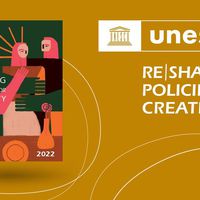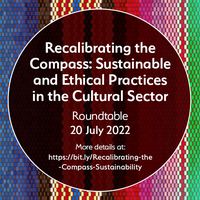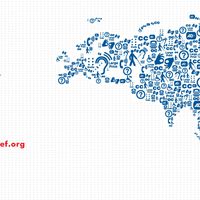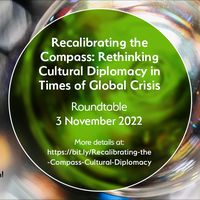Disability and the arts: Key challenges and resources

The question of improving the rights of people with disabilities has been gaining increasing attention. However, as the “Time to Act” report found, there is a need for more guidance and increased understanding if the cultural sector is to achieve equal access.
To mark International Day of People with Disability (IDPWD) on 3 December, we have gathered resources that shed some light on the current state of affairs of disability in the arts.
The 2022 Global Disability Summit overview
The International Disability Alliance (IDA) conducted global consultations, which uncovered the following key emerging issues and trends:
- Access to communication and information
- Access to justice
- Accessible transportation systems
- Active citizenship and political participation
- Deinstitutionalisation and access to community-based support
- Economic, social and cultural rights
- Inclusive budgeting
- Independent living and inclusion in society
- Involvement of local communities and access to community-based services
- Legal capacity
- Right to land and property
- Sport and cultural events
The 2022 Global Disability Summit (held in February) mobilised efforts for the implementation of the UN Convention on the Rights of Persons with Disabilities (CRPD), the principle of ‘Leave No One Behind’ and on building back better and more inclusive with regards to Covid-19.
With more than 7,000 participants, and 1420 new commitments made by over 190 stakeholders, the virtual two-day summit witnessed the announcement of new policies and funding, as well as ground-breaking initiatives to support people with disabilities in education, inclusive health care, in the job market and in gender rights.
You can see the recordings and summary here.
The rights of persons with disabilities in the cultural sector
There have been an increasing number of publications on the topic of art and disabilities. Such examples include:
- Time to Act – The first transnational study which evidences that cultural professionals in the performing arts across Europe lack the knowledge and experience needed to support equal access to the cultural sector for disabled artists, disabled arts professionals, and disabled audiences.
- Reflecting on Change – An independent report that explores the British Council’s global disability arts programme since 2012, sharing stories of change in countries such as Bangladesh, South Korea and Indonesia, and making additional recommendations for the future.
- Disabled Artists in the Mainstream: A New Cultural Agenda for Europe – A report from the first European Arts & Disability Cluster meeting in The Hague on 30 November 2019, it outlines one major policy recommendation for a new European cultural agenda and six proposals for the 2021–2027 Creative Europe programme.
- Culture & Disability: Policies & Practices in Asia and Europe – ASEF’s own report on legislation, policies, programmes and projects in the field of culture and disability in Asia and Europe.
Here at ASEF Culture360 we have also been exploring the topic of arts and disability through a number of articles, such as:
- Cutting Edge Theatre: Making Performing Arts Accessible
- Arts Engagement Therapeutically Enriches the Dementia Journey: Malaysian Case Studies
- Getting creative at home: Re-storying neuro-diversity
- Art & Disabilities in Southeast Asia | The story of Epic Arts | Cambodia
In spite of much-needed projects such as Europe Beyond Access (led by Disability Arts International, which promotes increased access to the arts for disabled artists and audiences around the globe) or the Persons with Digitabilities International Film Festival (a recent ASEF Culture360 media partner), more work still needs to be done across all arts organisations to incorporate diversity and ensure open access to all.
Similar content
posted on
08 Feb 2022
from - to
20 Jul 2022 - 20 Jul 2022
posted on
02 Dec 2016
from - to
03 Nov 2022 - 03 Nov 2022
from - to
15 Jun 2022 - 15 Jun 2022
from - to
25 May 2022 - 25 May 2022






